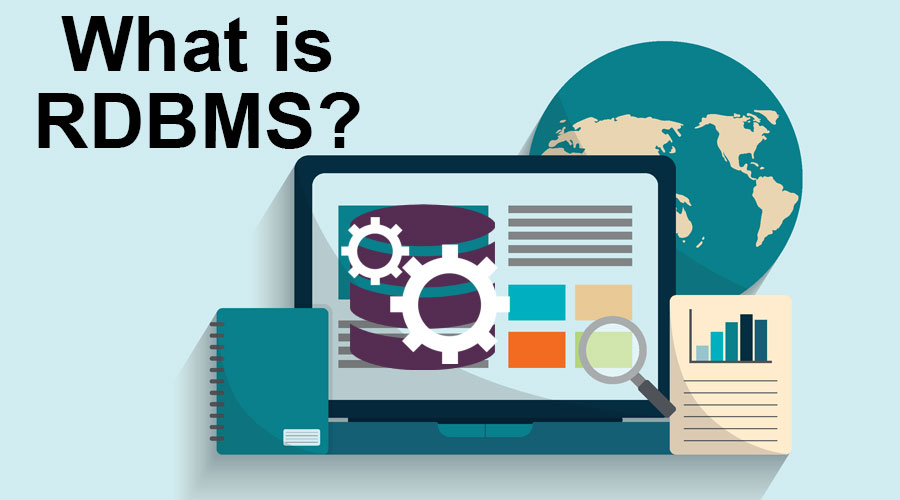Updated July 1, 2023
What is RDBMS
RDBMS stands for Relational Database Management System. It is a type of database that stores data in a well-organized composite arrangement of rows and columns. RDMS helps in the effortless processing of data, such as fetching, viewing, updating, deleting, and manipulating the contents of the tables. The data in each table will relate to the contents of other tables in the system. All tables in the database system will be linked to tables that have similar properties.
How RDBMS Works?
RDMS stores data in the tabular form of rows and columns. Each table has its unique primary key. A row is known as a record or horizontal entity which includes information about the specific entry. A column is known as a field or vertical entity which includes data about a specific field. When a user fires a query, it shows results for specific queries. It checks constraints before creating any table or data in the database.
Below is the list of constraints:
- Not Null: Used to ensure that no column have a null value, i.e., empty cell.
- Unique: Used to ensure that all column contains unique data.
- Check: Used to ensure that all entry in a column or row satisfies a specified condition.
- Primary Key: Identify each row of the table. It must not contain null values. A table can only have one primary key, and it links two or more tables. The primary key must be unique.
- Foreign Key: It links two tables. It makes a relation between two tables that contain the primary key. Tables can link with each other using these two keys.
- Data Integrity: Checks the integrity of data before creating data.
Below is the list of categories through which it checks the integrity of data:
- Entity Integrity: To ensure there are no duplicate rows
- Referential Integrity: To ensure that the rows cannot be deleted once relinked with other tables
- Domain Integrity: It ensures data entered in a table is based on specific conditions like file format, the range of values, etc.
- User-Defined Integrity: It ensures that integrity in the table satisfies the user-defined conditions.
Advantages of RDBMS
- Maintainance: It is simple to use. It allows database admins to easily maintain, control, and update data in the database. Backing up data is easy with RDMS. Automation tools of RBDMS automate these tasks.
- Flexibility: This feature of RDBMS saves a lot of time, as data is updated in one place. For example, suppose you have data from students, and you want to update one student’s detail. In this case, you just have to update the detail in the main table rather than updating it in every file. It automatically updates that information in every file of the database.
- Data Structure: This feature stores data in a user-friendly table format. Data are organized in a structured manner and match entries by firing queries.
- Privileges: This feature allows database administrators to control activities over the database. Administrators can grant user-specific access rather than all access. Administrators can also restrict user access.
Why do we need RDMS?
Let’s take a look at why we need RDBMS:
- Data Safety: RDBMS provides the safety of data through many security layers. Data will be safe by authorization codes even if the program crashes.
- Fault Tolerance: It provides fault tolerance by replicating the database. It helps when the system crashes because of sudden power failures, accidental shutdown, etc. It also affords concurrent access.
- Ease of Use: Data stored in a tabular format in rows and columns makes accessing, retrieving, and manipulating the data in simple manner.
- Scalability: It can handle huge quantities of data uniformly. In RDBMS, indexes help to sort data and speed up performance.
Why should we use RDMS?
We should use RDBMS because of the following reasons:
-
It enables the creation of virtual tables in the form of rows and columns for storing sensitive data.
-
SQL is a standard language used in RDBMS which uses simple syntax.
-
RDBMS allows multiple users to access the data at the same time
-
RDBMS acts as a bridge between users, applications, and the database
-
It provides administrative functions for managing data storage, access, performance, and many more functions.
How will this Technology Help you in Your Career Growth?
The RDMS is the most widely used database system worldwide in healthcare, education, travel, etc. Learning this technology will help you get a good job position in the organization, compete with others, and stand at the top of the market.
Recommended Articles
This has been a guide to What is RDBMS? Here we have discussed how it works, its needs, advantages, and uses of RDBMS. You may also look at the following article to learn more –



